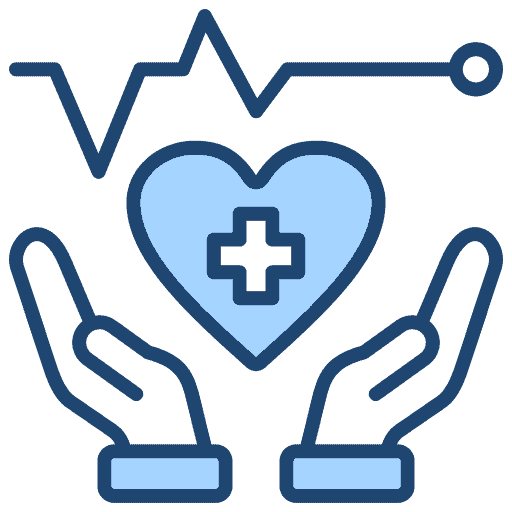
We all remember “the kissing disease” from adolescence, which is known as infectious mononucleosis, or mono. Since the virus spreads through saliva, it can be shared from kissing, but also from an uncovered cough or sneeze, or sharing food and drinks with someone who is infected.
It’s also considered a disease of the youth since mainly adolescents and young adults will present with all the symptoms; whereas young children who get infected may have very few symptoms so the disease may go unnoticed.
It’s also considered a disease of the youth since mainly adolescents and young adults will present with all the symptoms; whereas young children who get infected may have very few symptoms so the disease may go unnoticed.
Causes of Mono
Epstein-Barr Virus (EBV) is the main cause of mono, and one in four young adults who get infected with EBV will develop mono. EBV is a member of the herpes virus family, and is considered to be one of the most common human viruses since most people will get infected at some point in their lives.
EBV is spread through bodily fluids (mainly saliva), and once infected, the virus may stay in your body for months after acute symptoms resolve.
Since so many adults are exposed to EBV and may already be infected, they may have already built up antibodies, so they won’t get mono. This is why it’s mainly younger people who get infected with EBV and develop mono.
EBV is spread through bodily fluids (mainly saliva), and once infected, the virus may stay in your body for months after acute symptoms resolve.
Since so many adults are exposed to EBV and may already be infected, they may have already built up antibodies, so they won’t get mono. This is why it’s mainly younger people who get infected with EBV and develop mono.
Signs & Symptoms
Once infected with mono, there is an incubation period of four to six weeks, after which time symptoms may begin to appear.
Typically fever and sore throat symptoms will decrease within two weeks, but fatigue, enlarged lymph nodes, and swelling in the spleen could last for another few weeks.
The main signs and symptoms of mono are:
Although the symptoms can last a few weeks, typically the infection will clear on its own without any long-term issues when there aren’t any complications.
Some examples of complications from mono include swelling of the spleen that results in rupture (but only in extreme cases), liver inflammation or jaundice, anemia, low count of platelets (thrombocytopenia), or inflammation of the heart muscle (myocarditis). Contracting EBV causes more serious problems in anyone with an impaired immune system.
Typically fever and sore throat symptoms will decrease within two weeks, but fatigue, enlarged lymph nodes, and swelling in the spleen could last for another few weeks.
The main signs and symptoms of mono are:
- Fever
- Fatigue
- Appetite loss
- Sore throat (that will not improve with antibiotics)
- Swollen tonsils (which can cause problems with breathing) and swollen lymph nodes in the neck and armpits
- Rash on the skin
- Headache
- Enlargement of the spleen
Although the symptoms can last a few weeks, typically the infection will clear on its own without any long-term issues when there aren’t any complications.
Some examples of complications from mono include swelling of the spleen that results in rupture (but only in extreme cases), liver inflammation or jaundice, anemia, low count of platelets (thrombocytopenia), or inflammation of the heart muscle (myocarditis). Contracting EBV causes more serious problems in anyone with an impaired immune system.
Diagnosis and Treatment
Anyone experiencing the symptoms of mono should go to their doctor to get checked and diagnosed. A doctor will perform a physical exam to assess signs and symptoms, and ask questions to find out how long the symptoms have persisted.
Typically, mono is treated based on symptoms; however, lab tests can be used when it’s not presenting as a typical case. Blood tests can check for antibodies to EBV (a monospot test), and white blood cell count can suggest mono as a possibility based on an elevated number of white blood cells.
There isn’t a cure for mono since the virus will eventually go away on its own. Symptoms last about a month, so the focus of treatment is relieving the symptoms with rest (it may take months to resume exercise), fluids, and over-the-counter pain relievers for fever, headache, and sore throat.
Antibiotics are not prescribed for mono because they are not effective in treating mono since it’s a viral infection, not bacterial.
Typically, mono is treated based on symptoms; however, lab tests can be used when it’s not presenting as a typical case. Blood tests can check for antibodies to EBV (a monospot test), and white blood cell count can suggest mono as a possibility based on an elevated number of white blood cells.
There isn’t a cure for mono since the virus will eventually go away on its own. Symptoms last about a month, so the focus of treatment is relieving the symptoms with rest (it may take months to resume exercise), fluids, and over-the-counter pain relievers for fever, headache, and sore throat.
Antibiotics are not prescribed for mono because they are not effective in treating mono since it’s a viral infection, not bacterial.
Prevention
There is no vaccine against EBV or mono, so the best prevention is to avoid sharing any food/drink and close contact with anyone who is infected.
If you’re infected, you should be careful to not spread your saliva/bodily fluids until several weeks after your symptoms have completely subsided.
If you’re infected, you should be careful to not spread your saliva/bodily fluids until several weeks after your symptoms have completely subsided.
Sources and More Information
Centers for Disease Control and Prevention, “Epstein-Barr Virus and Infectious Mononucleosis”https://www.cdc.gov/epstein-barr/about-mono.html
CDC, “About Epstein-Barr Virus (EBV)” https://www.cdc.gov/epstein-barr/about-ebv.html
Familydoctor.org (American Academy of Family Physicians), “Mononucleosis (Mono)”https://familydoctor.org/condition/mononucleosis/?adfree=true
Mayo Clinic, “Mononucleosis” https://www.mayoclinic.org/diseases-conditions/mononucleosis/symptoms-causes/syc-20350328
NIH U.S. Library of Medicine, Medline Plus, “Infectious Mononucleosis”https://medlineplus.gov/infectiousmononucleosis.html
CDC, “About Epstein-Barr Virus (EBV)” https://www.cdc.gov/epstein-barr/about-ebv.html
Familydoctor.org (American Academy of Family Physicians), “Mononucleosis (Mono)”https://familydoctor.org/condition/mononucleosis/?adfree=true
Mayo Clinic, “Mononucleosis” https://www.mayoclinic.org/diseases-conditions/mononucleosis/symptoms-causes/syc-20350328
NIH U.S. Library of Medicine, Medline Plus, “Infectious Mononucleosis”https://medlineplus.gov/infectiousmononucleosis.html

